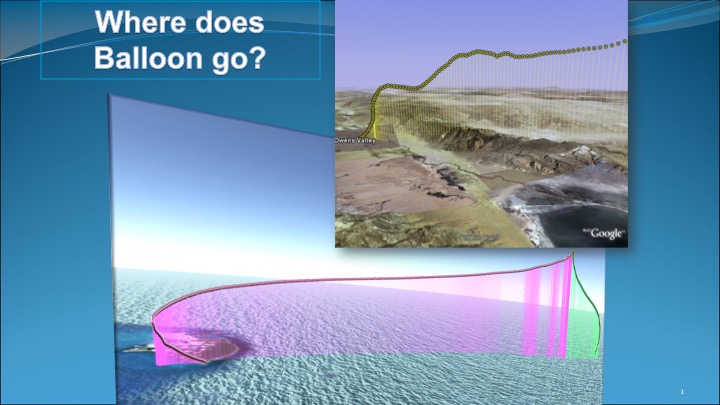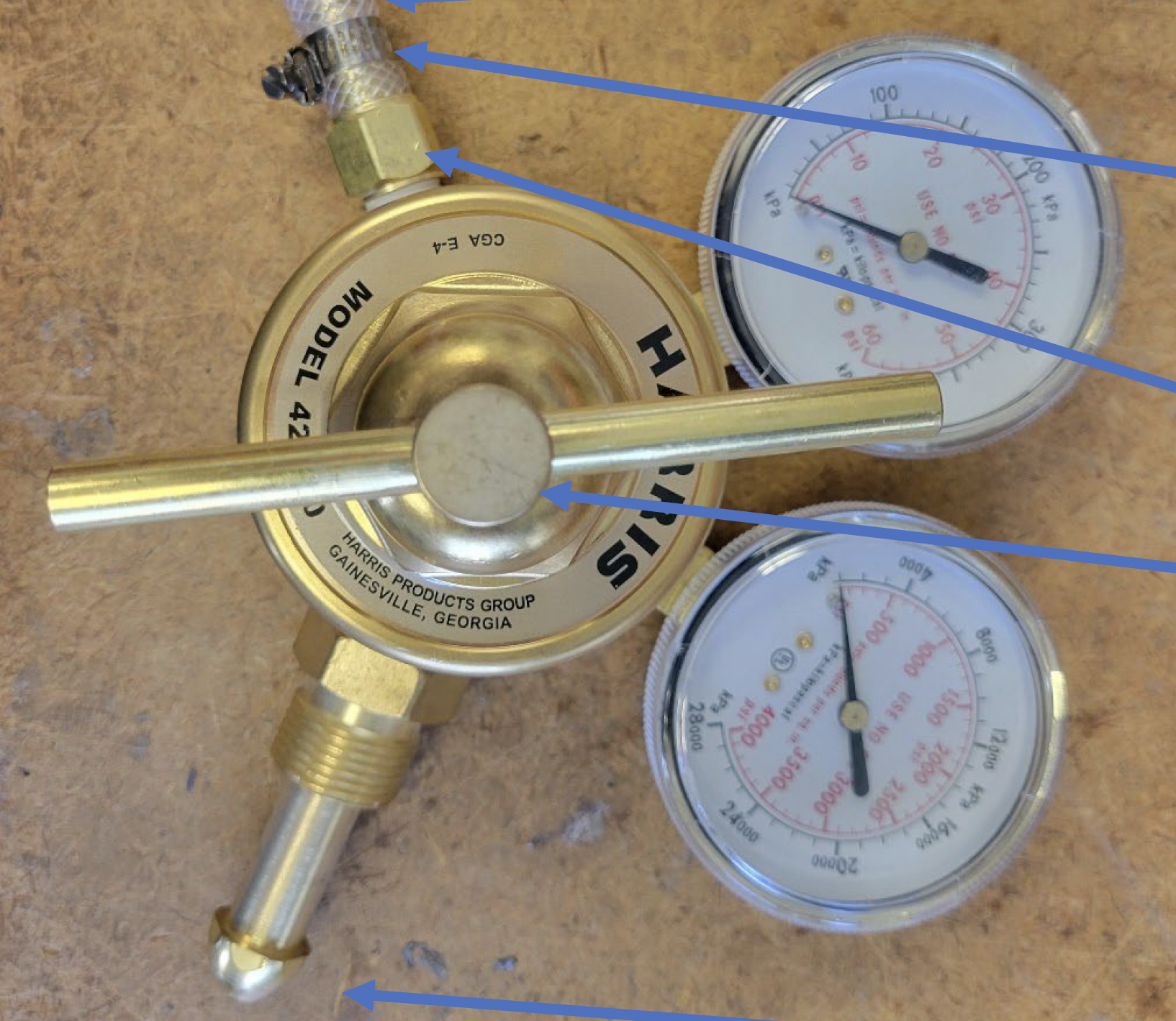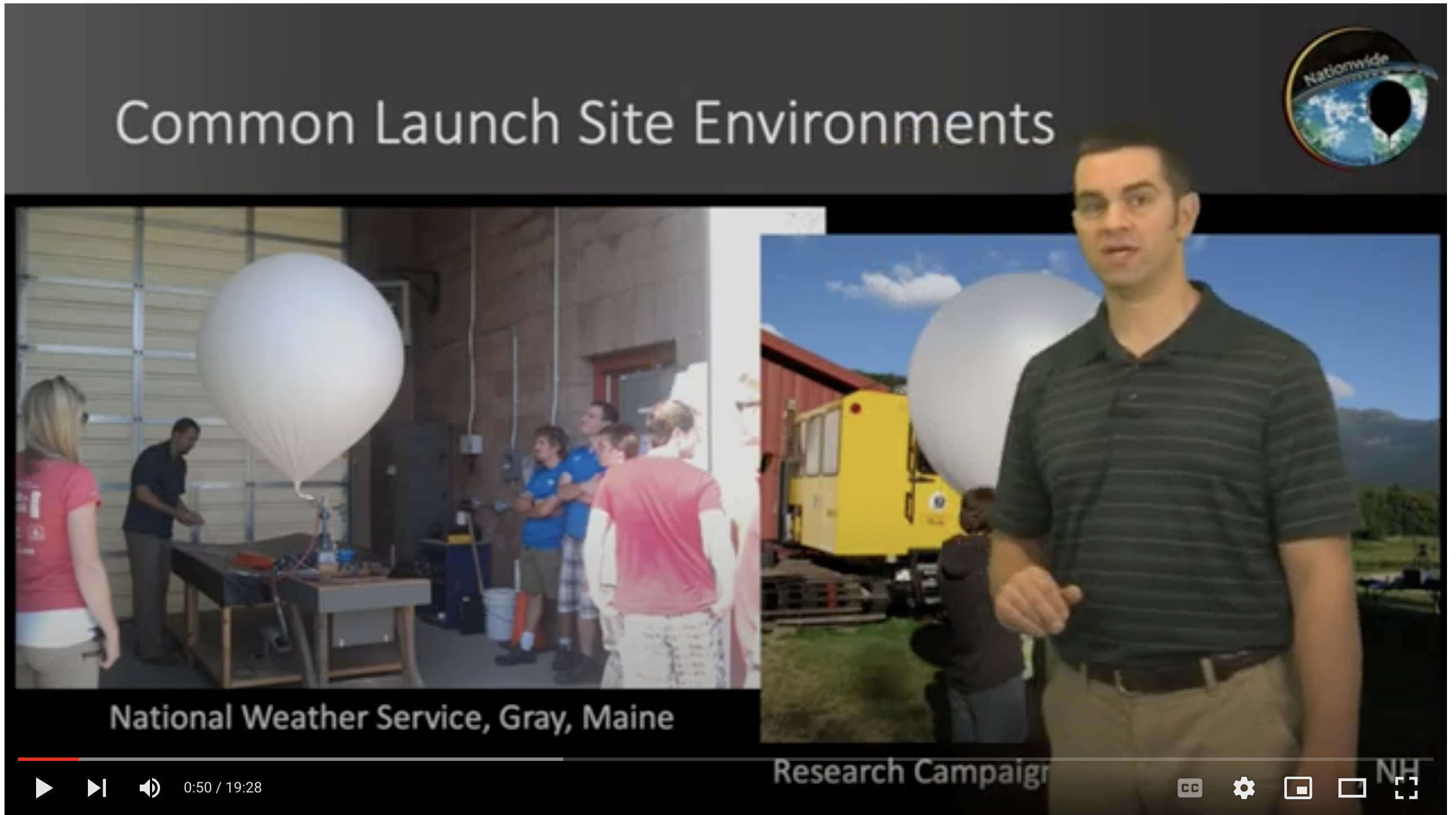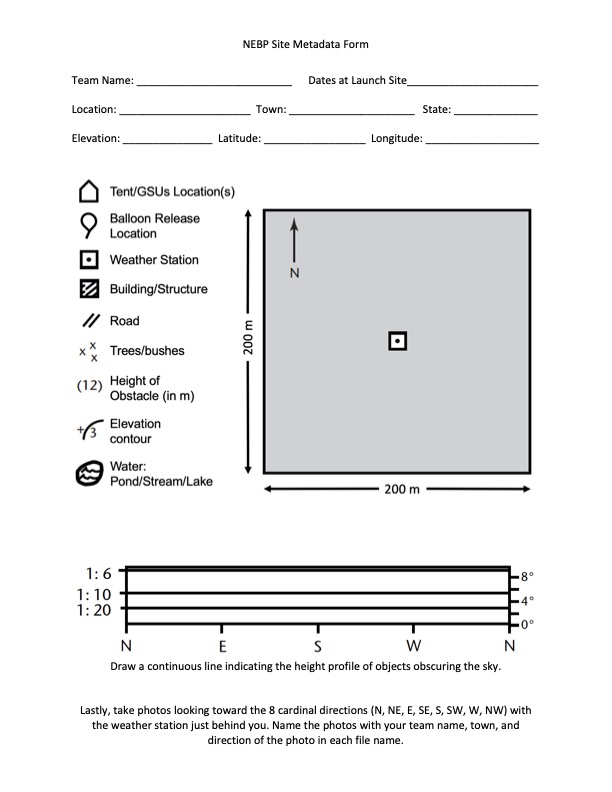Atmospheric Science Lesson 5: Preparing for Launch
Overview of the content
This lesson includes more information about ballooning for scientific data collection and how to plan a mission, including:
- Lessons learned from previous eclipse campaigns
- Balloon trajectory predictions.
- Launch site selection including:
- common launch site locations for weather balloons and for research campaigns.
- how scientific questions affect site selection
- launch site constraints
- Safety (video)
- Helium regulator and balloon fill instructions
Learning objectives
After completing this lessons, students will be able to:
- Identify and describe the possible hazards involved in high altitude balloon flight.
- Explain the risks and the risk mititgation stratagies to ensure safe launch, flight, and recovery operations.
- Demonstrate at least one balloon flight path prediction tool.
Lessons learned from previous campaigns
Safety first!
Safety of participants and bystanders should always come first. Try to assess all possible hazards and don't be afraid to cancel a launch or flight if there is any chance of injury or damage to property (e.g., thunderstorms, high winds).
In this video, Suzanne Smith (University of Kentucky) and Mary Bowden (University of Maryland) share safety considerations for ballooning. This information will apply to both the Atmospheric Science and the Engineering tracks. [YouTube, 9:21, closed captioned]
See more below under contingency planning, especially "play the movie forward," since most of the things you're trying to predict in that process are all possible negative outcomes and what mitigation measures need to be considered (e.g., Plans B,C,D etc).
Contingency planning
- Anticipate and plan for possible complications
- Expect bad weather (this is weather specific and not just the complications warning; with UAS and balloons, you should always expect bad weather).
-
Don’t hesitate to come up with and move on to Plan D (or even G). (this is also akin to anticipate and plan for possible complications but it has an additional encouragement to not feel bad about moving on when needed).
-
“Play the movie forward” (this came from industry - imagine what happens next).
- See the final Lesson 13 for more on contingency planning, including a detailed video featuring several leadership team members
Planning, teamwork and communications
- A robust communications plan is important.
- Set challenging but achievable goals and use cutting edge technology to create an engaging atmosphere.
- Project leaders must be highly responsive.
- Expectations at all levels should be reasonable and clearly communicated.
- Allow freedom and control wherever possible; it generates innovation.
- A strong sense of community produces motivation.
- Rather than single students with key responsibilities, pair students for these goals (students can then bounce ideas off each other before bringing to the larger group).
- Testing needs to be 1/3 of the timeline of design/build/test (testing is very often shortchanged in collegiate design/build/fly competitions and projects. If field operations are the main focus, then design is writing the protocols and testing is rehearsing in relevant and increasingly challenging conditions - at a specific time, coordinating with others, at night, doing different jobs (in case an emergency happens)).
Balloon trajectory predictions
 These four slides (view or download from our google drive) from Dr. Junhong Wang, University of Albany
- SUNY, offer an overview of balloon trajectory predictions and some software packages.
These four slides (view or download from our google drive) from Dr. Junhong Wang, University of Albany
- SUNY, offer an overview of balloon trajectory predictions and some software packages.
You can download and use these software packages, which were developed by the NOAA Ozone and Water Vapor Group to assist with weather balloon launch planning, data collection/processing, and instrument setup.
The University of Wyoming Weather Web also offers an onlinie tool for balloon trajectory predictions.
See also Lesson 9 of the Engineering Track for detailed information on predicting balloon trajectories.
Helium regulator and balloon fill connection
 By June 2023, all atmospheric science teams will have received all the parts necessary
to connect a helium regulator from the tank to the balloon. Below are images of the
assembly.
By June 2023, all atmospheric science teams will have received all the parts necessary
to connect a helium regulator from the tank to the balloon. Below are images of the
assembly.
Detailed instructions posted 6/8/23 [Download from the NEBP Google Drive]
Site selection
Launch site overivew by Dr. Eric Kelsey, Plymouth State University [YouTube video, 4:02]

NEBP Site Selection Deep Dive by Dr. Eric Kelsey, Plymouth State University [YouTube video, 19:28]
 |
The NEBP site metadata form allows you to record important information about your launch site. [NOTE, this is also included as a possible tool on the NEBP Career Portfolio page] |
Discussion questions for class
- For each of the environmental variables you want to measure, what is a representative measurement?
- In your current location (or launch site), where would you site your sensors to obtain a representative measurement for each variable?
![]() Don't forget to track today's progress in your portfolio
Don't forget to track today's progress in your portfolio
Will you take a few minutes to give us some feedback on this lesson? Thank you!
Course home page // Next lesson >>

